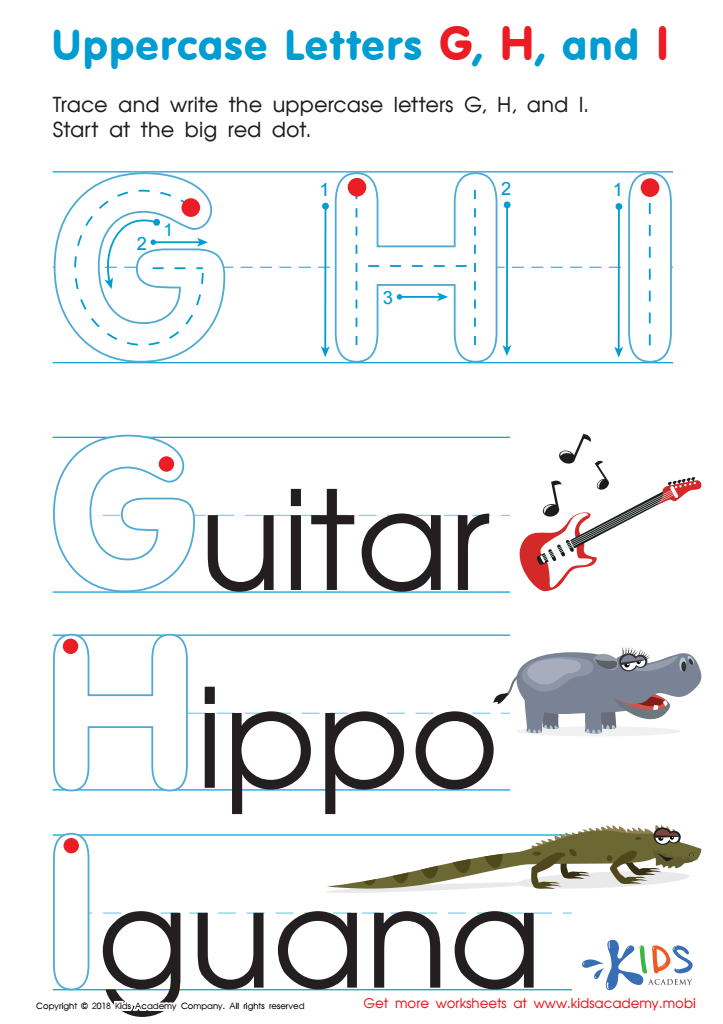Letter formation Normal Tracing Letters Worksheets for Ages 5-8
3 filtered results
-
From - To
Enhance your child's writing skills with our Letter Formation Normal Tracing Letters Worksheets designed specifically for ages 5-8. These engaging worksheets provide a fun and effective way for young learners to practice letter formation through guided tracing activities. Each worksheet features both uppercase and lowercase letters, encouraging children to develop their handwriting techniques and build confidence in their writing abilities. Perfect for home or classroom use, our resources promote essential fine motor skills and cognitive development. Explore our diverse collection of worksheets that make learning enjoyable while laying the foundation for literacy. Start your child's writing journey today!


Letter P Tracing Page


Uppercase Letters G, H, and I Worksheet


Letter G Tracing Page
Letter formation and tracing are crucial skills for children aged 5-8, as they lay the foundation for effective writing. Proper letter formation helps young learners develop fine motor skills, hand-eye coordination, and cognitive abilities. When children trace letters, they reinforce their understanding of letter shapes and improve their handwriting proficiency. This hands-on activity promotes muscle memory, allowing children to write more fluidly and confidently as they progress in their education.
Moreover, mastering letter formation is essential for early literacy development. As children learn to recognize, write, and differentiate between letters, they build the necessary skills for reading and spelling. This foundational knowledge supports their ability to communicate effectively and express themselves creatively through writing.
From a psychological perspective, experiencing success in tracing and forming letters fosters a sense of accomplishment in young learners. This boost in self-esteem encourages a positive attitude toward learning, paving the way for a lifelong interest in literacy.
In summary, parents and teachers should prioritize letter formation and normal tracing for children aged 5-8, as it greatly influences overall academic success, fine motor development, and a love for learning that extends beyond the classroom.
 Assign to My Students
Assign to My Students




















